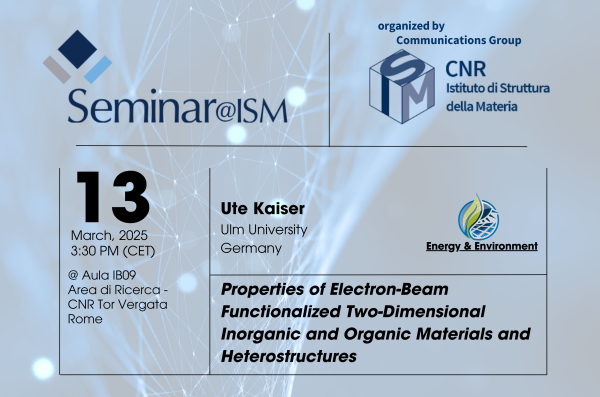A detailed understanding of electron-beam interactions with materials is essential for utilizing the unique chromatic- and spherical-aberration-corrected low-voltage SALVE instrument to both image and functionalize two-dimensional (2D) inorganic materials and heterostructures at the atomic scale.
In this talk, we combine density functional theory-based molecular dynamics simulations with U-Net-based fully convolutional neural network (FCN) analysis to understand the emergence of new phases and functionalities in various 2D inorganic materials, including transition metal dichalcogenides (TMDs), transition metal phosphorus trichalcogenides (TMPTs), and heterostructures composed of 2D perovskites and 2D crystalline lithium.
In the final part of the talk, we demonstrate that, under certain conditions, the low-voltage TEM approach can also be applied to image 2D organic materials at the near atomic scale.
Ute Kaiser, physicist. Since 2004, she has been a professor at the University of Ulm.
Kaiser studied crystallography at Humboldt University in Berlin and earned her doctorate there in 1993. In 2002, she completed her habilitation in experimental physics at Friedrich Schiller University Jena. From 1976 to 1993, she worked at the Academy of Sciences in Berlin at the Institute for Inorganic Chemistry and in Jena at the Institute for Optics and Spectroscopy. She then continued her research at the Institute for Solid State Physics at Friedrich Schiller University Jena from 1993 to 2004 and at the Institute for Micro- and Nanotechnologies at TU Ilmenau in 2004. Since 2004, she has been a professor at the University of Ulm, where she initiated the SALVE project in 2009 for the development of low-voltage transmission electron microscopy.
Her international research experience includes stays at the University of Cambridge from 1994 to 1996, Tohoku University in Japan from 1997 to 1998, and Bell Laboratories in the USA in 2000. Kaiser regularly organizes international symposia on transmission electron microscopy, has been an editor for Physical Sciences at *Micron* since 2020, and is a member of various professional societies.
Her scientific interests focus on the development of advanced electron microscopy techniques for investigating and modifying two-dimensional materials for materials science, nanotechnology, and quantum technology.


 English (UK)
English (UK)  Italiano (Italia)
Italiano (Italia)